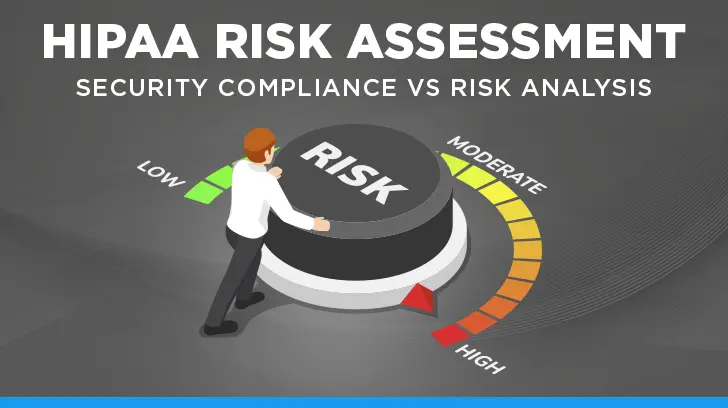
Steps involved in conducting HIPAA risk assessment
Sensitive health data protection is important in the current digital era. Strict rules are set forth by the Health Insurance Portability and Accountability Act (HIPAA) to guarantee the availability, confidentiality, and integrity of protected health information (PHI). Healthcare institutions must identify and reduce potential threats to PHI by conducting a HIPAA risk assessment just like we do at PHCSS. We will go over the key components of performing a HIPAA risk assessment in this blog article, as well as how to use risk assessment tools and HIPAA security risk assessment to protect patient data.
What is HIPAA security risk assessment
In order to identify potential risks and vulnerabilities that could jeopardize the confidentiality, integrity, and availability of protected health information (PHI), as mandated by the Health Insurance Portability and Accountability Act (HIPAA), an organization must conduct a HIPAA security risk assessment. In order to prevent PHI from being accessed, disclosed, or misused by unauthorized parties, healthcare organizations, including covered entities and business associates, can utilize this evaluation to better understand their security posture, rank risks, and put in place the necessary protections.
Significance of HIPAA security risk assessment
HIPAA security risk assessment is important because it is essential to maintain legal compliance, safeguard private health information, and reduce security risks in healthcare facilities. Organizations may prioritize mitigation efforts, identify vulnerabilities and threats to protected health information (PHI), and allocate resources effectively to tighten security controls and procedures by conducting regular risk assessments.
Adherence to HIPAA laws helps in cost-effective risk management techniques, maintains company reputation, builds patient trust, and helps organizations avoid fines and legal ramifications.
In the end, HIPAA security risk assessment is important for healthcare organizations that want to preserve strong security protocols and protect PHI’s availability, integrity, and confidentiality in the ever-changing and complicated healthcare environment of today.
Steps involved in HIPAA risk assessment
Here are some steps that are involved in HIPAA risk assessment
Step 1: Understanding HIPAA requirements
It is important to Comprehend HIPAA regulations thoroughly before beginning the risk assessment procedure. Learn about the Security Rule, which describes the technical, administrative, and physical security measures needed to secure PHI. Determine the essential components of the HIPAA-mandated risk assessment to guarantee compliance all the way through.
Step 2: Define the scope
Clearly identify the scope of your risk assessment. To successfully focus efforts Identify the resources, systems, and procedures that your company uses to handle, transmit, or store PHI. This covers mobile devices, workstations, servers, and electronic health record (EHR) systems, as well as any third-party apps or services that deal with PHI.
Step 3: Identify threat and vulnerabilities
To find potential risks and PHI vulnerabilities, use HIPAA security risk assessment tools. Go through paperwork, conduct technical assessments, and interview people to find security control gaps like out-of-date software, insufficient encryption techniques, or weak access restrictions. Take into account both external and internal hazards, such as malicious insiders, human errors, and outside cyber attacks.
Step 4: Assess risk likelihood and impact
Analyze the possibility and effect of threats and vulnerabilities found in relation to PHI’s availability, confidentiality, and integrity. Rate the risks according to their seriousness, frequency, and possible outcomes. Effective resource allocation and risk mitigation effort prioritization are discussed in this quantitative analysis.
Step 5: Implement controls and mitigation strategies
Create and put into place suitable controls and risk-reduction measures to deal with recognized hazards. This could be involved in putting in place administrative and technological security measures like rules, processes, and staff training, as well as intrusion detection systems, encryption, and access controls. Make sure that controls are logged, examined frequently, and changed to reflect new risks and weaknesses.
Step 6: Monitor and review
Evaluate and monitor deployed mitigation techniques and controls on a regular basis. Assess risks on a regular basis to find new threats, weak points, or environmental changes that could affect PHI security. To consistently strengthen the security posture of your company, stay up to date on new developments in cyber security and recommended practices.
Step 7: Document and report findings
Keep a record of the whole risk assessment process, including the procedures, conclusions, and suggestions. Keep thorough records to prove that you are in compliance with HIPAA regulations and to make it easier for regulatory bodies to conduct audits or ask questions. Deliver concise and clear reports that clearly communicate the results of the risk assessment and any remediation actions carried out to senior management, stakeholders, and pertinent regulatory agencies.
Conclusion
One essential step in guaranteeing the security and privacy of protected health information is performing a HIPAA risk assessment. Healthcare companies can prevent patient data from being misused, accessed without authorization, or disclosed by using HIPAA security risk assessment tools to proactively detect and mitigate threats. Keep in mind that adhering to HIPAA standards requires constant evaluation, enhancement, and adjustment to new risks in the dynamic field of healthcare cybersecurity. So, contact PHCSS today for your best healthcare services as we use HIPAA risk assessment to make sure our patients get the best healthcare services.








